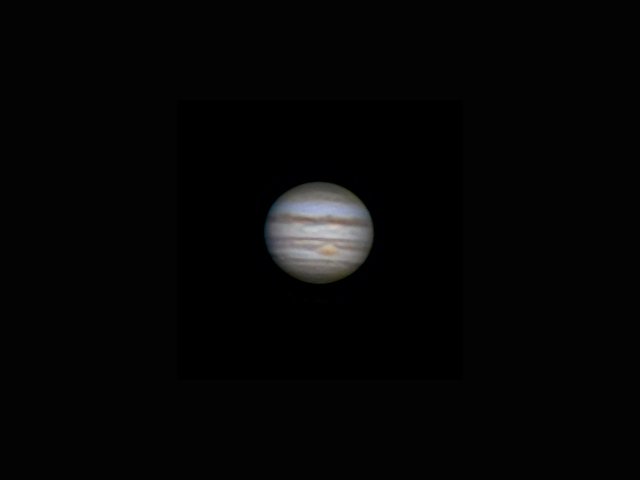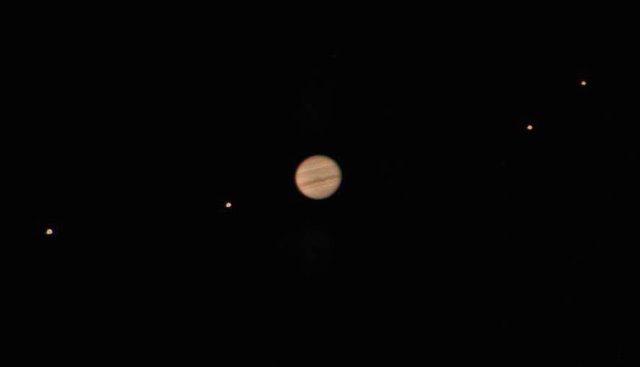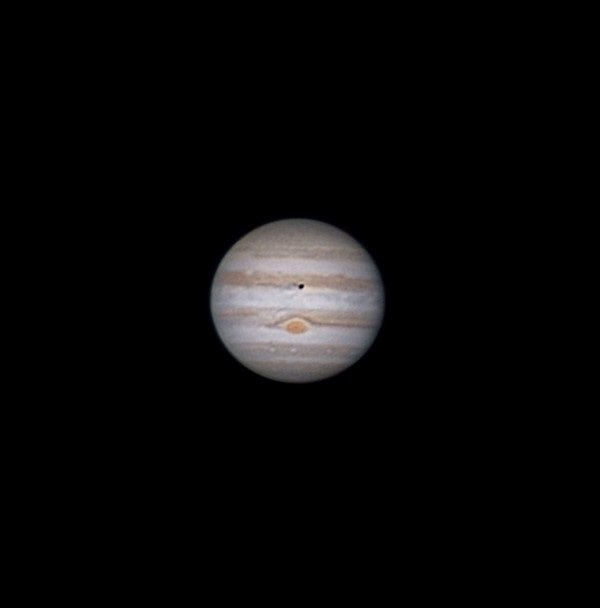Astronomical observations #3 : Jupiter
The planet Jupiter is probably the simplest planet for observation. It looks like a bright star in the sky, but the binoculars are already showing that it is a planet with a system of 4 bright moons. I invite you to read my observational tips.
A view of Jupiter in an amateur telescope.

Jupiter is easy to find in the sky almost all year round. When viewed with the naked eye, it resembles a white star. Moves along the ecliptic (wanders in the sky through the constellations of zodiac signs). Jupiter need 12 years for a full circle of the sky. It is the largest planet in the Solar System and is located quite close to the Earth. Therefore, its angular dimensions in the sky are large from 33 arcseconds, when it is farthest from the Earth to 50 arcseconds during the opposition (maximum close-up). At the same time, depending on the location, its brightness varies from -1.2 to -2.5 mag (opposition). In smaller telescopes with average conditions, you can see such views of Jupiter along with its four largest moons as on the photo below.
A view of Jupiter in a small telescope.

However, in ideal conditions, a large amateur telescope with a diameter of over 12 inches can give you the views as in the picture below. Jupiter is the most variable planet, when you watch it through the telescope at intervals you can observe changes in the structure of its clouds. It is the fastest-rotating solar system planet around its own axis - its rotation period is less than 10 hours! Imagine on Earth a day that has 10 hours instead of 24. The bands visible through the telescope can have their color due to sulfur and phosphorus compounds. Jupiter's fast spinning movement stretches clouds parallel to the equator and gives the planet a slightly flattened shape. Bright zones are high clouds rising 1000 kilometers above the surface of the planet (ocean of liquid hydrogen). Darker bands are clouds below. The use of colorful planetary filters in observations allows to see various details. The following filters are recommended for Jupiter: blue, yellow and orange. They help to see the Great Red Spot.
A view of Jupiter in a large telescope.

Now you can find Jupiter in the constellation Libra in the southern sky in the evening. All you need is a 10 X 50 binoculars to see the planet's tiny shield and four Galilean moons. At the end, I will show you my amateur video of Jupiter's observation in a telescope. However, it is of poor quality. Live image has a much better resolution. The planet is moving quickly because in a large magnification the Earth's rotation is visible.
My amateur video of Jupiter from a mobile phone.
Thank you for reading. I hope these tips will help you. To hear in the next part of Astro Observations.
Greetings to lovers of Astronomy!
Sources:
Jupiter
Atmosphere of Jupiter
Great Red Spot
Galilean moons
and my knowledge...
All rights reserved by @astromaniac 2018